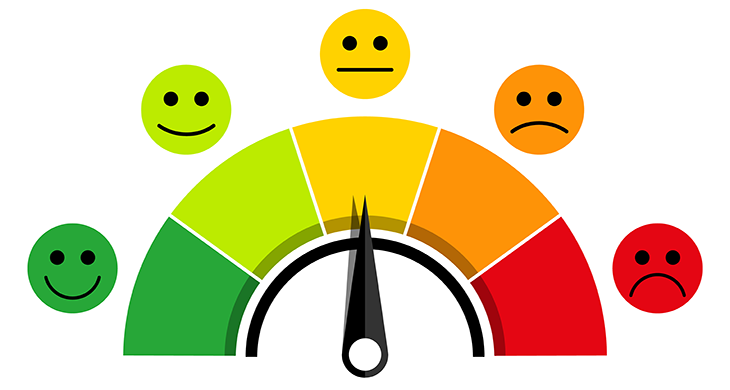Expecting pain? That could really make it hurt worse
How much we think something will hurt can affect how much pain we feel

Keep your cool. If you expect someone sticking a needle into your arm will not hurt much, you may actually experience less pain, a new study shows.
AlexRaths/iStockphoto
Here’s a good reason not to dwell on how much that flu shot is going to hurt. If you think it’s going to be really painful, it will. But expect just a small jab and the shot will likely hurt less. That’s the implications of a new study.
It didn’t actually study people getting a shot in the arm. The human volunteers instead got a burning sensation from a hot electrode. But the idea is the same.
The brain learns when to expect a nasty pain and then responds accordingly, the new data show. But people only learn from their painful experiences if the actual discomfort matches what they had been led to expect.

Marieke Jepma is a neuroscientist — someone who studies the brain. She works at the University of Amsterdam in the Netherlands, where she studies how people perceive pain. Over time, she became fascinated by how expectations about pain can influence how how much discomfort someone feels. She began to wonder how predictions affect how their brain processes pain — and learn from it.
To study pain, scientists have to (gulp) inflict pain. Jepma and her team recruited 62 brave volunteers. The researchers placed a small square patch on each volunteer’s arm (below the elbow) or leg (below the knee). The patch held an electrode that could heat up to deliver searing pain. Each volunteer then watched a screen as a picture appeared. One shape warned that the pain they were about to get would be bad. Another warned that the coming pain would be more bearable. Then the electrode heated up to about 49° Celsius (120° Fahrenheit).
“We follow guidelines,” Jepma notes. The pain can’t be maintained for too long. The temperatures used also can’t be too high. “Of course, I tried it on myself,” Jepma says. “It’s like holding a cup of hot coffee,” she explains — one you’d prefer to put down.
Prepare for pain!
Before the electrode got hot, the participants were asked to rank how much they thought its heat would hurt on a scale from one to 100. After each painful episode, the participants ranked how much it actually had hurt.
The whole time, the volunteers were lying inside a magnetic resonance imaging, or MRI, machine. It uses magnetic fields to scan the brain. The detailed images it makes showed how active different parts of the brain are — and how they change as someone experiences pain.
The scans let Jepma’s team watch how the brain responded and compare that to how people had ranked their pain.
When volunteers saw a shape that suggested the coming pain would be very bad, they rated the later heat as quite painful. When the preceding shape suggested the pain would be bearable, they rated the heat as less painful. The MRI scans showed a similar pattern. After a cue for high pain, the brain acted as if the pain was bad. Following a cue for low pain, the brain responded as if the heat was less painful.
In fact, the electrode temperature had been the same each time. So the pain, too, should have been the same each time. The participants’ rankings — and their brains — instead had responded based on what they had been taught to expect.
Great expectations
In a second experiment with the volunteers, Jepma and her team varied how hot the electrode got. A recruit might get a high-pain cue but only a low burning experience. Or someone might get a high-pain cue and a very hot electrode. So cues to coming pain levels not reliable.
Before each testing, Jepma’s team asked their recruits how much pain they expected from the electrodes. If the pain they had experienced before matched what they had been warned to expect, they now accurately predicted what the next round would bring. But if they expected a lot of pain before and got only a little, they never learned. They continued to expect a lot of pain the next time around.
Concludes Jepma: “When [something] confirms our belief, we learn from that experience.” But when reality doesn’t match what we expect, we don’t learn.
There is a concept known as confirmation bias, Jepma says. It holds that people learn best from events that back up what they already believe. We’re more likely to remember or believe what we expect or want and to ignore what doesn’t match what we expect. And this is not limited to pain. This bias also “operates in other types of behavior,” she says, “such as social situations.”
Jepma and her colleagues published their results October 29, 2018, in Nature Human Behaviour.

Scientists have known that expectations can affect how much pain someone feels, notes Katja Wiech. She’s a neuroscientist at the University of Oxford in England. But this new study takes things a step further. “It shows not only that the perception of pain is biased, but the [brain’s] response to that is biased.”
Pain is a natural response to things that may cause harm. Pain can teach people to stay out of harm’s way. But while the sting of a needle or the burn of a hot stove happens on our arm or hand, the perception of that pain occurs “in your mind and the brain,” says Wiech. It’s an indirect readout of what’s happening [to the body].” And as such, she says, it can vary.
Studies such as these might help doctors learn how to better treat pain. For example, training people to adjust what they expect, in terms of pain, might help patients respond better to drugs for pain.
Jepma adds, however, that her team’s work does not mean pain is “all in your head.” It is real and sends the body important messages. What’s more, even the strongest beliefs won’t totally erase the sting of some shot. The goal instead is to prevent people from responding to true pain in an exaggerated way.







